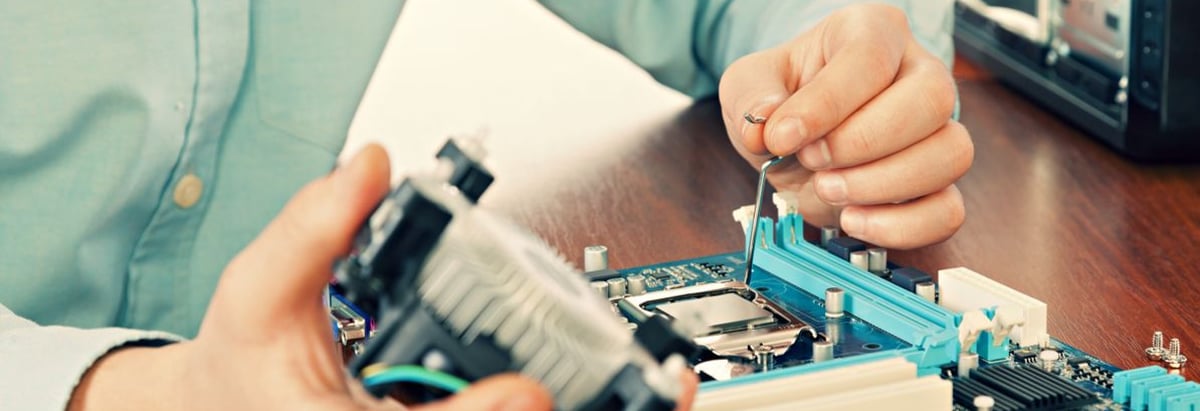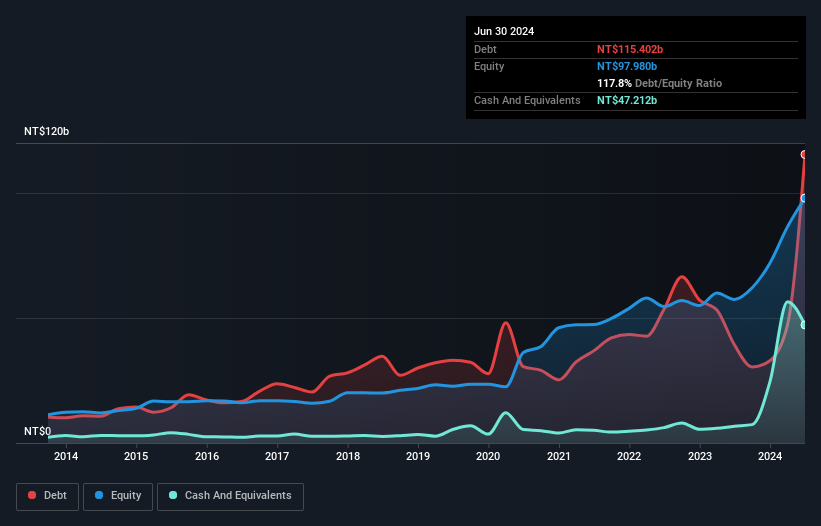- Taiwan
- /
- Electronic Equipment and Components
- /
- TWSE:3036
Is WT Microelectronics (TWSE:3036) A Risky Investment?

David Iben put it well when he said, 'Volatility is not a risk we care about. What we care about is avoiding the permanent loss of capital.' It's only natural to consider a company's balance sheet when you examine how risky it is, since debt is often involved when a business collapses. We note that WT Microelectronics Co., Ltd. (TWSE:3036) does have debt on its balance sheet. But the real question is whether this debt is making the company risky.
When Is Debt A Problem?
Debt assists a business until the business has trouble paying it off, either with new capital or with free cash flow. Part and parcel of capitalism is the process of 'creative destruction' where failed businesses are mercilessly liquidated by their bankers. However, a more common (but still painful) scenario is that it has to raise new equity capital at a low price, thus permanently diluting shareholders. By replacing dilution, though, debt can be an extremely good tool for businesses that need capital to invest in growth at high rates of return. When we examine debt levels, we first consider both cash and debt levels, together.
See our latest analysis for WT Microelectronics
How Much Debt Does WT Microelectronics Carry?
You can click the graphic below for the historical numbers, but it shows that as of June 2024 WT Microelectronics had NT$115.4b of debt, an increase on NT$39.3b, over one year. On the flip side, it has NT$47.2b in cash leading to net debt of about NT$68.2b.

A Look At WT Microelectronics' Liabilities
The latest balance sheet data shows that WT Microelectronics had liabilities of NT$215.6b due within a year, and liabilities of NT$87.3b falling due after that. Offsetting these obligations, it had cash of NT$47.2b as well as receivables valued at NT$156.8b due within 12 months. So it has liabilities totalling NT$98.9b more than its cash and near-term receivables, combined.
This deficit is considerable relative to its market capitalization of NT$120.5b, so it does suggest shareholders should keep an eye on WT Microelectronics' use of debt. Should its lenders demand that it shore up the balance sheet, shareholders would likely face severe dilution.
We use two main ratios to inform us about debt levels relative to earnings. The first is net debt divided by earnings before interest, tax, depreciation, and amortization (EBITDA), while the second is how many times its earnings before interest and tax (EBIT) covers its interest expense (or its interest cover, for short). The advantage of this approach is that we take into account both the absolute quantum of debt (with net debt to EBITDA) and the actual interest expenses associated with that debt (with its interest cover ratio).
With a net debt to EBITDA ratio of 6.0, it's fair to say WT Microelectronics does have a significant amount of debt. However, its interest coverage of 6.8 is reasonably strong, which is a good sign. If WT Microelectronics can keep growing EBIT at last year's rate of 15% over the last year, then it will find its debt load easier to manage. The balance sheet is clearly the area to focus on when you are analysing debt. But it is future earnings, more than anything, that will determine WT Microelectronics's ability to maintain a healthy balance sheet going forward. So if you want to see what the professionals think, you might find this free report on analyst profit forecasts to be interesting.
Finally, a business needs free cash flow to pay off debt; accounting profits just don't cut it. So we always check how much of that EBIT is translated into free cash flow. Over the last three years, WT Microelectronics actually produced more free cash flow than EBIT. That sort of strong cash conversion gets us as excited as the crowd when the beat drops at a Daft Punk concert.
Our View
On our analysis WT Microelectronics's conversion of EBIT to free cash flow should signal that it won't have too much trouble with its debt. But the other factors we noted above weren't so encouraging. In particular, net debt to EBITDA gives us cold feet. When we consider all the factors mentioned above, we do feel a bit cautious about WT Microelectronics's use of debt. While we appreciate debt can enhance returns on equity, we'd suggest that shareholders keep close watch on its debt levels, lest they increase. There's no doubt that we learn most about debt from the balance sheet. However, not all investment risk resides within the balance sheet - far from it. For example, we've discovered 2 warning signs for WT Microelectronics that you should be aware of before investing here.
When all is said and done, sometimes its easier to focus on companies that don't even need debt. Readers can access a list of growth stocks with zero net debt 100% free, right now.
Valuation is complex, but we're here to simplify it.
Discover if WT Microelectronics might be undervalued or overvalued with our detailed analysis, featuring fair value estimates, potential risks, dividends, insider trades, and its financial condition.
Access Free AnalysisHave feedback on this article? Concerned about the content? Get in touch with us directly. Alternatively, email editorial-team (at) simplywallst.com.
This article by Simply Wall St is general in nature. We provide commentary based on historical data and analyst forecasts only using an unbiased methodology and our articles are not intended to be financial advice. It does not constitute a recommendation to buy or sell any stock, and does not take account of your objectives, or your financial situation. We aim to bring you long-term focused analysis driven by fundamental data. Note that our analysis may not factor in the latest price-sensitive company announcements or qualitative material. Simply Wall St has no position in any stocks mentioned.
About TWSE:3036
WT Microelectronics
Develops and sells electronic and communication components in Taiwan, China, and internationally.
Solid track record with excellent balance sheet.
Similar Companies
Market Insights
Community Narratives





